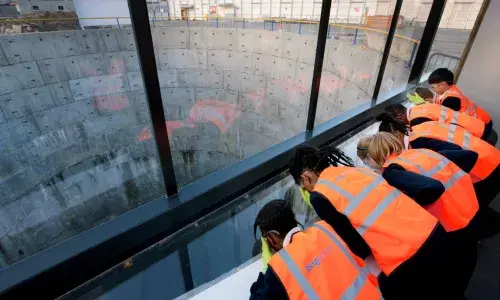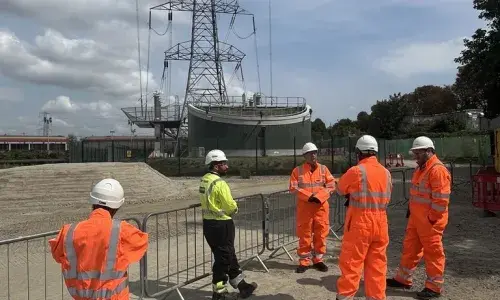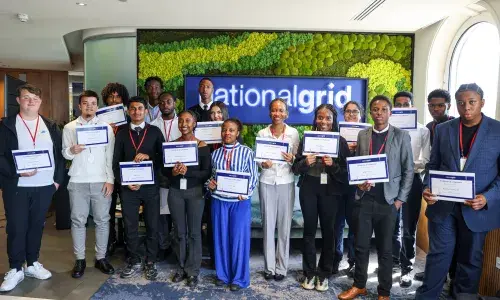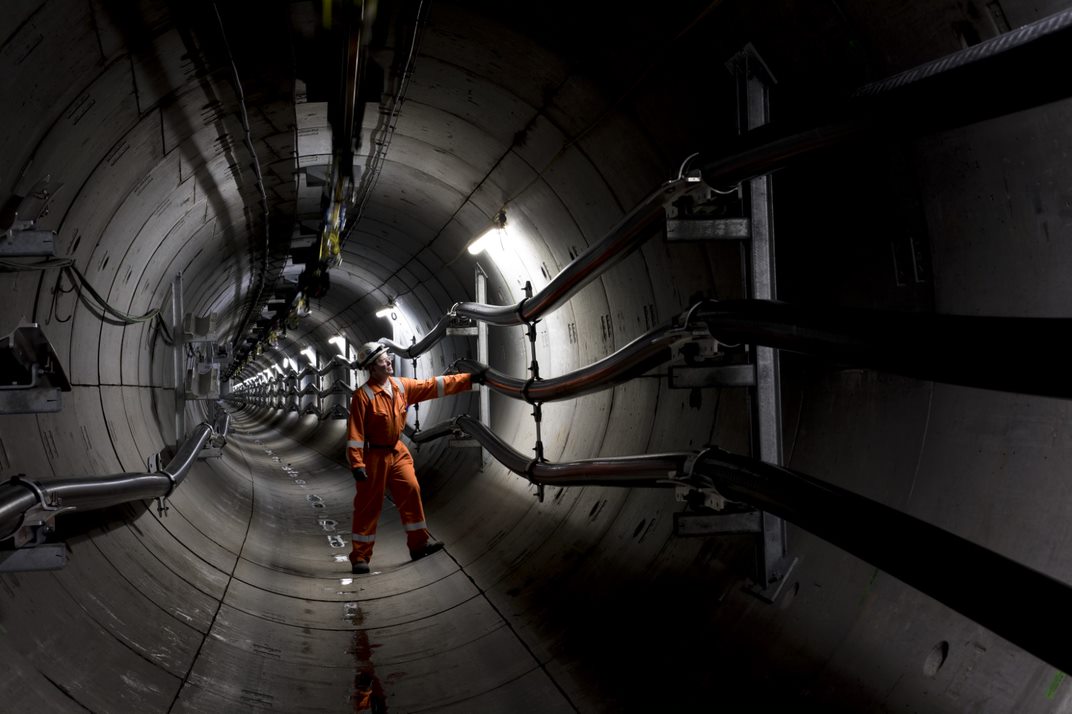
Underground tunnels, net zero and making a difference. In discussion with LPT's new project director - Onur Aydemir
In November 2022, Onur Aydemir became the project director on National Grid’s London Power Tunnels (LPT) project. The vast £1 billion scheme is rewiring South London via deep underground tunnels, futureproofing London’s energy infrastructure and ensuring people remain connected to safe and reliable electricity supplies. With eight years’ experience working at National Grid, Onur is ideally placed to lead this significant infrastructure project.
As the project enters a critical 12 months, Onur sat down to answer questions about his background, his passion for supporting the next generation of engineers and the key role sustainability plays in National Grid’s major infrastructure delivery.
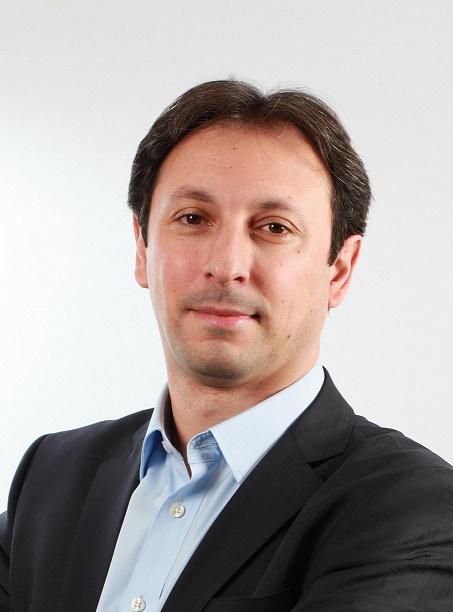
Q1: Onur, taking over one of the largest infrastructure projects in the country must be a daunting and exciting prospect. How has your career before today prepared you for this role?
I have been lucky to work all over the world on so many different projects. From starting out of university as a junior engineer at a power plant in Turkey to now leading the LPT project.
Many of the highlights for me have been here in the UK. I was lucky enough to work for two years on the London Olympics. It was a challenging job with a very clear deadline, but it was exciting to be part of the team that would bring this legacy to London.
After nearly two years working on the Olympic Stadium, I took up a slightly different role, joining the security and logistics team for the Olympic Games. The Olympics host many world leaders and it was our job to make sure that every part of the games could go ahead safely. We spent a year going over every aspect of the new Olympic Village, from each manhole to every switch. It was a proud moment to hand over the village to the Olympic Delivery Authority a year ahead of the games.
I then spent three years in the mining industry before taking a six-month sabbatical. After which, it was time to get back to work and I joined National Grid. That was nearly eight years ago now. In that time, I have worked on a range of schemes from interconnectors, natural gas facilities and major infrastructure projects – I now lead the LPT project.
Q2: A huge range of different projects then. How did you develop an interest in engineering, specifically the energy sector? Was there a specific moment of inspiration?
We have many engineers and architects in my family; my father celebrated his 50-year anniversary as a Civil Engineer last December. So, family was one of the factors that led me to study engineering and graduating as an electrical engineer – this is a job that allows me to solve a variety of problems and design things that really matter and make a long-term difference to society.
As a career, it can present so many opportunities to make your mark on the world and use your talents to develop solutions that have not been thought of before. This is particularly relevant in the energy industry today. We operate in a rapidly changing landscape and the challenge of net zero means there is a considerable volume of work and problems to solve to develop our networks to meet 2050 targets which excites me.
If you take LPT for example, National Grid has made a commitment to ensuring that construction projects are carbon neutral by 2025/26. This is a massive challenge for such a big project, but I am lucky to have inherited a team that have already made good progress in this area. We originally committed to achieving a 5% reduction in carbon emissions, but our latest monitoring shows we are on track to deliver a 21% reduction against the pre-project baseline. I am extremely proud of this and it is something like the equivalent of 25,250 tonnes of CO2, which is an enormous figure – substantially more than if the average UK car would emit if it drove all the way to the Sun![1]
Q3: You seem to thrive on engineering challenges. Was there anything specifically that interested you about the London Power Tunnels project?
LPT is a dream job for any engineer, it has the highest levels of design and engineering baked into it and, with many different packages and scopes overlapping, there is no shortage of challenge. The exciting aspect, though, is being part of a team that is delivering energy security and supporting the wider vision of net zero.
When you take a step back and think about the practical benefits of the scheme, it can be hard to comprehend the hours, days, months, and years that will be saved in efficiencies once the project is complete. These efficiencies will mean engineers are spending less time on maintenance to fix the problems of years gone by and focussing more on how we solve the challenges of tomorrow. For example, by housing new electricity cables in deep underground tunnels future repairs and maintenance work can be carried out without disrupting traffic, residents and businesses and additional cables can be installed in the tunnels to meet future demand without causing disruption.
It is also great to think that I will have played a part in a project that will still be in use for centuries to come!
Q4: Aside from a general enthusiasm for tackling engineering challenges and make system more efficient, are there issues that you are passionate about?
I have really enjoyed learning more about the work the LPT team is doing to encourage more young people to get involved in engineering. We have a careers outreach programme with social enterprise, Connectr, which has visited secondary schools over the last couple of years to inspire and help young people with their career choices. We have reached more than 50,000 students so far – I am tasked with getting to 100,000 by the end of the project, so we are ahead of schedule, but plenty more to go!
I am passionate about maximising the safety of my team and wider public, as I know the impact any incident or accident can cause. I feel personally responsible if anyone gets hurt and always encourage my team to feel the same.
Aside from practical engineering challenges, I am also very keen to develop the benefits of diversity and inclusion in my teams and continuously try to set the expectations and lead by example. Developing young engineers – who are new to your project – and seeing them grow, coming up with a solution and seeing it delivered is great to see.
Q5: Great sentiments and good to hear strong progress is being made to expand accessibility and interest in engineering – sounds like we are going to need it. As we look ahead to rest of 2023, what are the key milestones coming up on the project?
I am pleased to say that we continue to be on budget and time, which is where any project lead wants to be. My job is to ensure we are continuing to do all we can to ensure the project is progressing on schedule.
This year we are expecting the project to shift its focus from building tunnels to installing cables as well as building several new buildings, like the substation at Bengeworth Road in Lambeth. Personally, I am looking forward to the tunnel boring machine breakthroughs at Kings Avenue and Crayford, which always have an element of drama associated with them.
Onur, thank you for your time and all the best with the project.
[1] In 2019, the average UK car travels 7,600 miles per year and gave off 1.6 tons of CO2, which means measures taken on LPT have reduced carbon emissions by the equivalent of 119,937,500 miles travelled by the average UK car.
